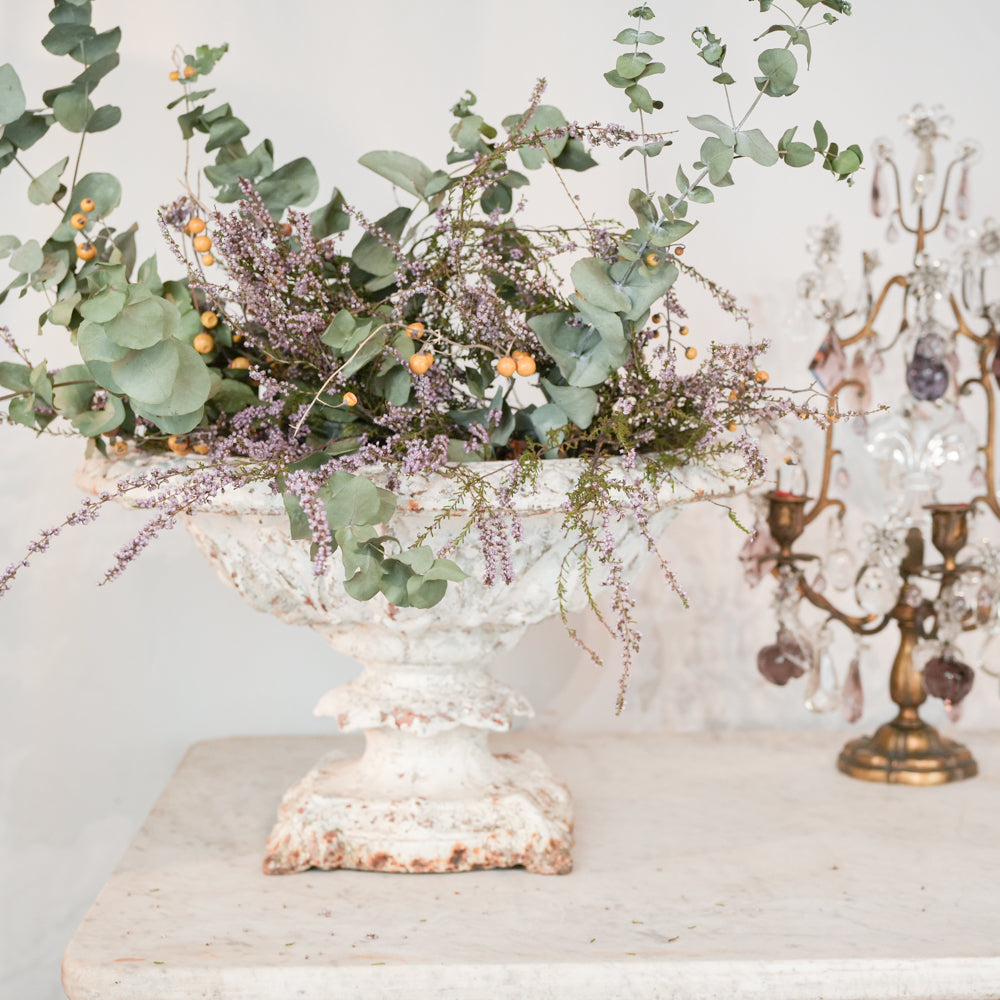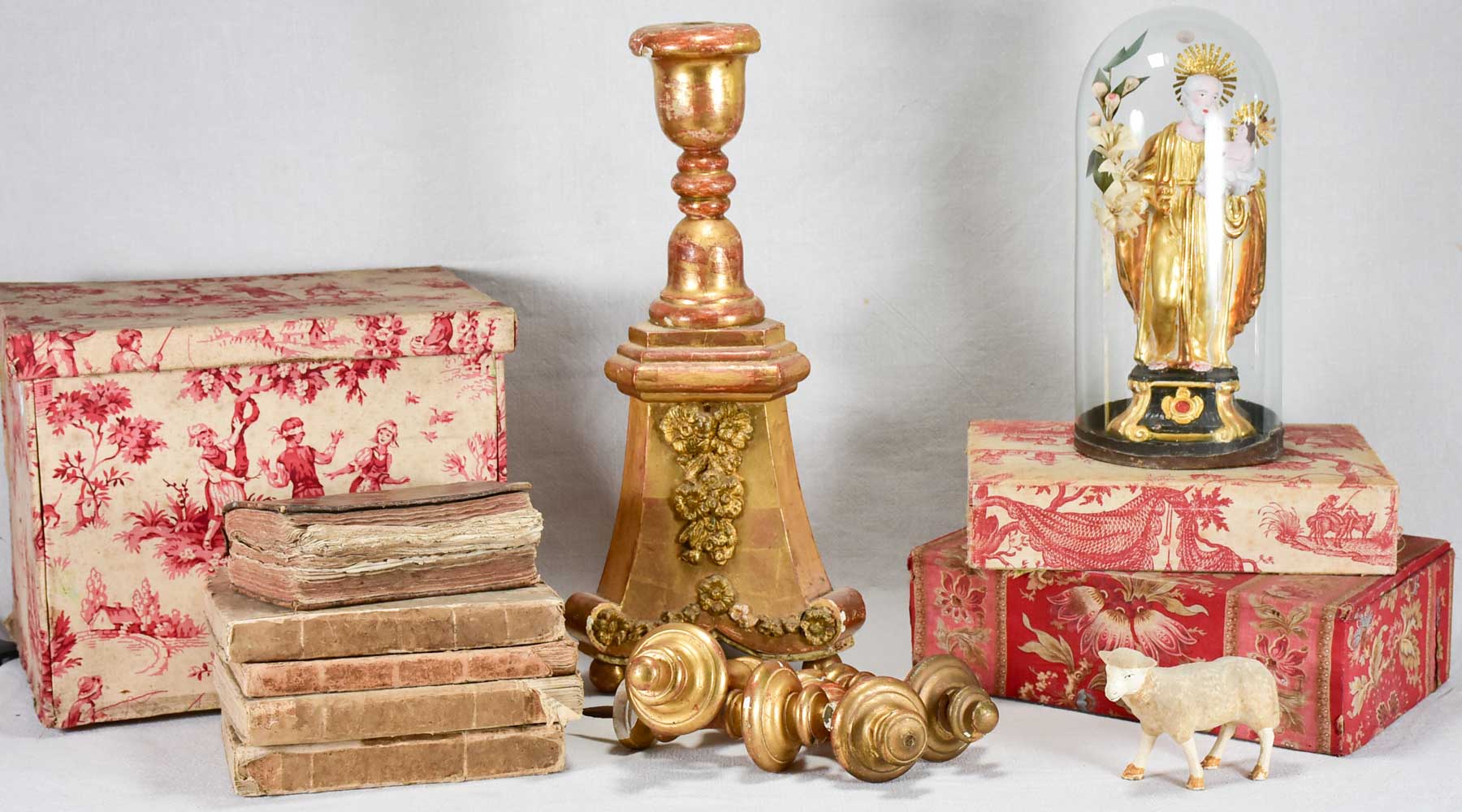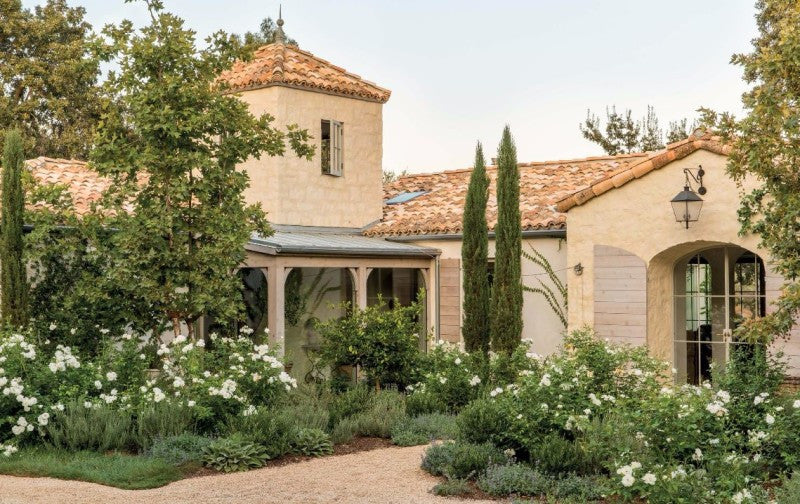
Medici urns and 13 decorative uses
What is a Medici urn? Here we uncover their history, characteristics, and 13 chic ways to display them around the house and garden (including some tips on what to plant in them). Provided also are some examples of antique, vintage, and bespoke Medici urns available for purchase online at Chez Pluie.
1. Historical Background and influence on the visual and decorative arts
2. Characteristics of a Medici urn
3. 13 Tips for displaying Medici urns
4. Examples of antique, vintage and new Medici urns for purchase at Chez Pluie
1. Historical Background
Medici urn is usually the name applied to a style of beautiful garden pots whose design loosely resembles vases from classical antiquity.
Two in particular, the Medici Vase and the Borghese Vase, have left their mark on visual culture. They resemble each other. They are both gigantic bell-shaped marble kraters and once served as garden ornaments in classical Roman villas. The vases were rediscovered in the 16th century.
Medici Vase
The slightly smaller Medici Vase was found completely smashed and underwent painstaking restoration. It had been sculpted in Athens during the first century AD and now resides in the Uffizi Gallery in Florence.
Ever since their rediscovery in the 1500s, countless copies have been made of both kinds of vases, some exact replicas, while others were looser reproductions.
 The Medici krater is a celebrated classical design, with many fine replicas found in gardens and collections worldwide. One such example can be seen at Kew Gardens in London here.
The Medici krater is a celebrated classical design, with many fine replicas found in gardens and collections worldwide. One such example can be seen at Kew Gardens in London here.
Remarkably the original Medici Vase was blue, red and gold, according to the Uffizi, but the patina of time has worn those colors away. The scene carved in beautiful bas-relief around the vase has not been pinned down, but the theme of the subject matter definitely is mythological, related possibly to the Trojan War and Homer's Iliad.
Borghese Vase
Found in 1569 in the Horti Sallustiani, Rome, the slightly older Borghese Vase also was made in Athens, in around 40–30 BC. It now graces the Daru Gallery in the Louvre Museum, Paris.
The Borghese Vase is an example of one of the many fine replicas of the original Borghese krater. A number of these stand proudly in the gardens of Versailles.
Wine is the theme of the graceful freize carved in bas-relief around the Borghese Vase. Bacchus or Dionysus, the Roman and Greek god of wine respectively, is participating in a Bacchanalian procession. Ariadne and the god Apollo have been identified among the drunken followers on the freize.
Influence of classical vases on the visual and decorative arts
Classical vases such as these have inspired artists and the decorative arts industry. After their rediscovery in the 16th century, many artists drew the Borghese and Medici vases and painted portraits of people standing next to them. Wedgewood made heart-stopping replicas of both. The design of many garden urns can trace their aesthetic roots back to these two old pots.
Not only have the Medici and Borghese Vases been influential on garden pots, but on the interior design industry as well. Note the inventive lampstand in the photo above. You may have noticed that many champagne buckets echo the shape of these classical vases as well.
2. Characteristics of a Medici urn
It's less straightforward to pin down exactly what makes a particular urn a Medici urn - the term is fairly loosely applied - but pots bearing this name usually have one or more of the following three distinctive features:
1) an everted lip
2) gadrooning (the ornamental notching or carving of a rounded molding)
3) sometimes an acanthus-leaf design encircles the base of the bell
4) the bell stands on a spreading fluted stem, which is elevated on a low square or octagonal base (sometimes with gadrooning)
Medici urns are formed mostly from cast iron and come in a variety of colors, particularly black, white, and green. Often they are sculpted from stone and terra-cotta (glazed or un-lacquered). Some are made with handles, like the prominent ones retained on the original Medici Vase, while some aren't.
Examples of all of these are to be found at Chez Pluie's online boutique in the collection of Antique French garden urns.
3. 13 Tips for displaying Medici urns
1. Laissez-faire

Leave them be. Unadorned, the sculptural beauty and graceful proportions of Medici urns are fully revealed. In the dining room above, Lewis Miller, who is a floral designer, has chosen this time not to fill the cheerful white Medici vase on the bench in the background with flowers. Rather, he transforms the light fixture above the tablescape into a floral installation of yellow wattle and white lilies and keeps the focus on the festive table setting.
2. Floral arrangements in urns
However, Medici urns naturally can support the drama and romance of a spectacular bloom of fresh cut flowers, like this almost tumbling display of peonies.
3. Pairs of urns indoors
These pleasing crisp white urns bring a refreshing and meditative feeling to the interior.
4. Plant a tree in an urn
The Medici urn enlivens the corner without stealing the show, even though it rivals the original Greek krater in its enormity.
5. Indoor plants: moss and succulents
For minimalist beauty, grow a mound of moss in a Medici urn. It will provide nice company and comfort indoors, and do well in an airy, cooler window lit space.
A mix of succulents look fabulous in smaller Medici urns as well.
6. Urns outdoors
Add rhythm and interest to your outdoor table setting with different styles and sizes of urns. Antique urns usually are made from cast iron or reconstituted stone, so they are stable and can support trees and a tremendous amount of flowers and foliage.
Even if an urn is outside, it needn't always be planted. Stone urns can bring elegance and calm left bare.
7. Rosemary planted in an urn
For a quintessential French look, plant rosemary in an urn. Gardening tip: hide the woody undergrowth with assylum.
8. Use urns in seasonal displays
Planted urns also look fabulous on the porch and can participate in a fall decorative display.
A stunning winter beauty. Add a touch of glimmer over the festive weeks with Christmas baubles, but instead of taking it all down, preserve the glorious foliage and continue nuturing and adoring it well into the new year.
9. Elevate an urn on a stand
If your urn has to compete to be seen among tall plants and shrubs or you just want to feature it prominently, try mounting it on a pedestal.
For a low-maintenance display, waxy succulents mixed with annuals look stunning in French urns. As they are so easy to propagate, it doesn't take long to have an urn overflowing with plants.
10. An urn in a garden bed
A Medici urn placed among flowerbeds brings a touch of formality and enables you to play with different heights.
11. Flank a doorway with a pair of urns
There's nothing more chic than a pair of urns either side of a doorway.
12. Display a collection of urns
Grouping pots together can be visually effective and have a layering effect against a courtyard wall. A display such as this host of Medici urns filled with greenery and daisies could also turn a problematic or awkwardly situated garden corner into a delightful nook.
13. Create a bold focal point in the garden
A large antique urn can hold its own in any space and is a lovely way to emphasize an axis and create a focal point.
4. Examples of antique, vintage and new Medici urns for purchase at Chez Pluie
Photographed above is an exquisite pair of 19th-century Chambord-style garden planters with striking scrolling handles on a square base in a distressed white paint that has developed naturally over time—perfect for adding character to any garden or outdoor space. These two urns are currently available from Chez Pluie.
Above is a large, weighty cast iron Medici urn dating to the nineteenth century, France. This gorgeous urn will add a French touch to any interior or garden space, and is currently available online with Chez Pluie.
Pictured above is a classic cast iron Medici urn from the nineteenth century. It has recently been repainted with a blue/gray finish. A classic choice to add an instant French touch to your garden or interior. This item is currently available for purchase online with Chez Pluie.
Above is a pair 20th-century cast-iron white-beige Medici urns with no handles, a shortened bell, and a round base. They are currently in stock at Chez Pluie.
Photographed above is a pair of early 20th-century cast-iron planters that will add an instant French touch to any garden, gate or terrace. Dating from the 20th century and made from weighty cast iron with a stunning mixed green and white patina.
There are two lovely cast iron Medici planters from the nineteenth century available at Chez Pluie at the moment. These planters were made by the Corneau Alfred Charleville foundry near Paris and have a lovely timeworn patina.
Pictured above is an example of a stunning rare vintage ceramic Médici urn from the renowned pottery town of Aubagne, France. The tall, elegant form features a deep, dark glaze with a metallic finish, expertly designed to mimic the look of metal, adding a sophisticated illusion to the ceramic material. Its large size would make it a focal point indoors and would look amazing holding flowers. Outdoors it could serve as a pot for topiary or citrus.
Photographed above is a pair of large mounted French cast iron Medici planters on pedestals. They have a striking rust patina that enhances their antique allure and are currently available on the Chez Pluie website.
Antique and vintage pedestals
Usually in stock at Chez Pluie is a variety of pedestals on which to mount your Medici urn.
Pair of Vintage French Cast Iron Garden Pedestals w/ Red Patina
Two mid-century twisted column pedestals
Late 19th century brass pedestal
Antique French ceramic display pedestal w/ green glaze- column
Faux marble column pedestal w/ square top
Pair of Sturdy Industrial Cast Iron Pedestals
Explore Chez Pluie's current complete collection of Antique French garden urns.
Can't find what you want? Do you have something particular in mind, but it isn't listed on Chez Pluie yet? Engage the Finders Service, Susannah and Hugh Cameron will be pleased to assist you in acquiring your dream item!
Frequently Asked Questions
1. What makes a pot a Medici urn?
The term is usually applied to pots with a classical style and have one or more of the following three distinctive features:
1) a gadrooned everted lip
2) an acanthus-leaf carving encircling the base of the bell
3) the bell stands on a spreading fluted stem, which is elevated on a low square or octagonal base (sometimes with gadrooning)
Medici urns are formed mostly from cast iron and come in a variety of colors, particularly black, white, and green. Often they are sculpted from stone and terracotta (glazed or un-lacquered). Some are made with handles, like the prominent ones retained on the original Medici Vase, while some aren't.
2. Where can I buy a Medici urn?
It is possible to buy antique, vintage, and contemporary Medici urns from the online vintage and antique store, Chez Pluie.
Related Posts:
An introduction to classic French garden pots, planters, urns, and olive jars
Four easy ways to decorate with sunburst mirrors


































6 comments
I am so excited about Chez Pluie and look forward to each email! I love all things French and remember my first visit to Provence many years ago. Now I want to go back and spent more time there. Keep the emails coming and thank you so much for sharing.
Cally Hogsett
FABULOUS! Thank you for doing this.
I’ve always loved these urns. I have one white marble colored. Wondering what to do with it in the garden here in Hawaii.
Corinne Ching
Great! Inspirational.
Thank you.
Anne
C Anne
I find so very interesting all of your posts and enjoy returning to them again and again for inspiration. Thank you for sharing your ideas and expertise through Chez Pluie.
Sallie Bill
stunning photos and inspiration
Nikki
Thanks
MElonie
Leave a comment
This site is protected by hCaptcha and the hCaptcha Privacy Policy and Terms of Service apply.